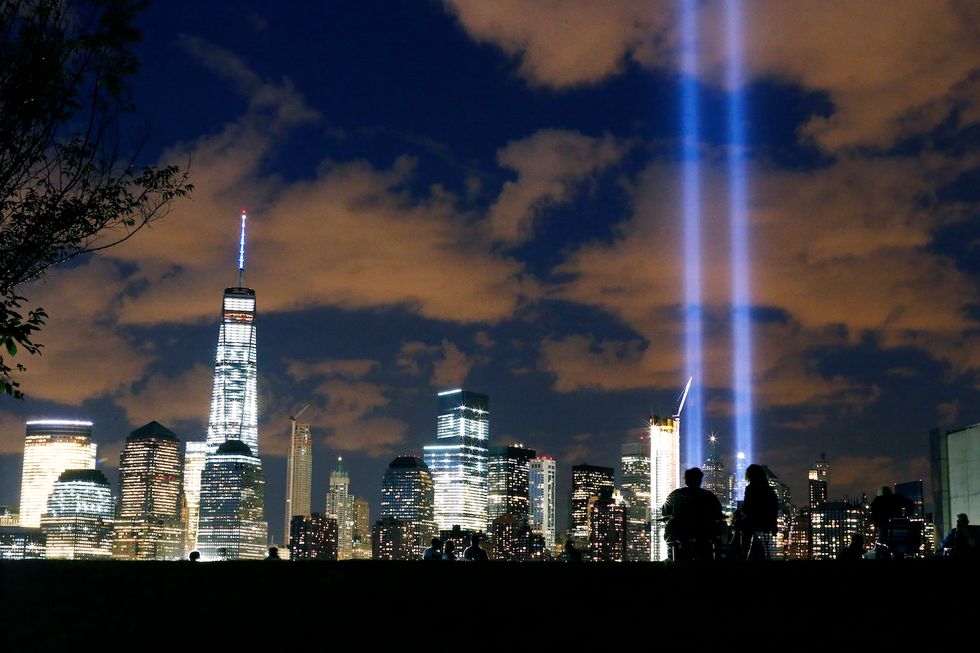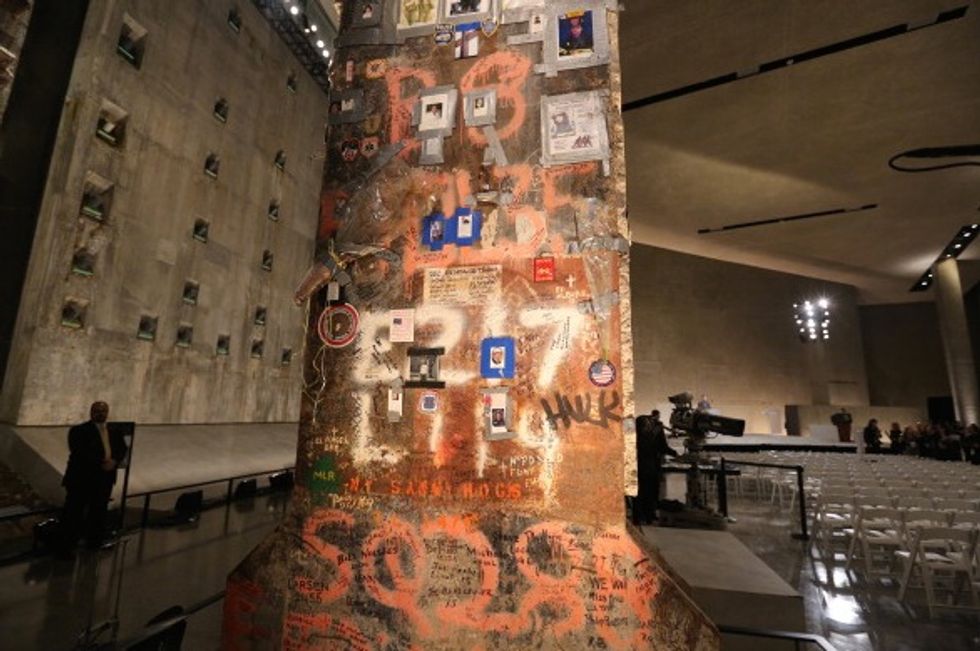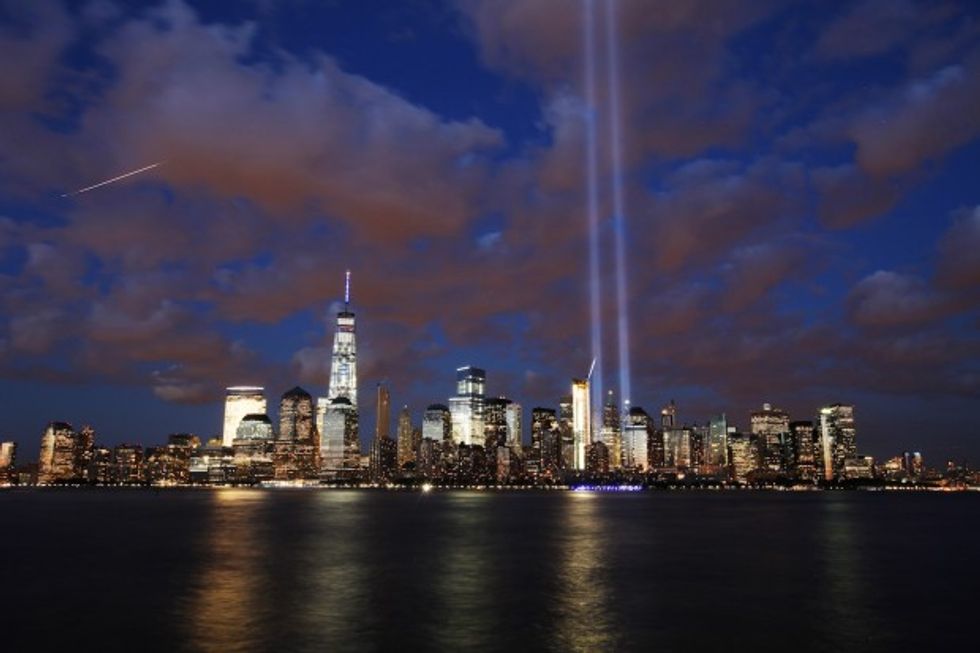
Kena Betancur/Getty Images

The long-awaited release of the classified 28 pages of the September 11 investigation by joint congressional intelligence committees that allegedly implicated the Saudi Arabian government occurred on July 15.
Members of Congress permitted to read those pages over the years suggested Saudi complicity was shown in the pages. Now, some critics’ reaction to the release of the pages reminds us of the infamous “grassy knoll” moment of the investigation into President John F. Kennedy’s 1963 assassination.
Conspiracy theorists cited the rush of police that November 22 up a grassy knoll as evidence an assassin had fired from behind a fence. However, film footage showed the rush by police was not immediate—it came well over a minute later. And it was not initiated by anyone having firsthand knowledge of the shooting direction.

Dallas motorcycle policeman Clyde Haygood was a block away when the shots rang out. Rushing to the scene, he parked his cycle and, seeing an officer on the railbridge, raced up the grassy knoll to confer with him. Others, believing Haygood was in pursuit of a suspect, raced up as well. The stampede up the knoll was a lead diligent investigators had to pursue; but no evidence was ever uncovered to support the theory an assassin fired from behind the fence.
Similarly, the release of the classified 28 pages, we had been led to believe, would clearly show Saudi government complicity in September 11. We now know that is not the case.
In analyzing the classified 28 pages, it is important to understand they were written in 2002, to be explored as possible leads. They preceded the September 11 commission report, released in 2004, which actually did explore those leads—finding they led nowhere.
Like the grassy knoll incident 53 years ago, investigators had first to identify all possible theories and then follow up on them. The 28 pages consist exactly of that—theoretical leads, but not evidentiary conclusions. Effectively, the 2004 September 11 report, therefore, trumps the 28 pages written in 2002.
Saudi Foreign Minister Adel al-Jubeir pointed out that his government never feared the release of the pages—and actually had pressed for it to happen years earlier. He too emphasized what the pages reveal are suspicions that were based on initial investigative leads at the time of the attacks when it was “natural for people wanting to pursue any lead. We welcomed it. We cooperated.” He added that the questions giving rise to these suspicions had been answered long ago.
There was some unfortunate verbiage used in the September 11 Commission report upon which Saudi conspiracy theorists hung their hat. The report said it found no evidence concerning Al Qaeda that the “Saudi government as an institution or senior Saudi officials individually funded the organization” [emphasis added]. Critics focused on the italicized words as suggesting unofficial sanctioning occurred.
Nonetheless, former Sen. Bob Graham (D-Fla.), who has long advocated their release, claims information in the 28 pages “suggests a strong linkage between those terrorists and the Kingdom of Saudi Arabia, Saudi charities, and other Saudi stakeholders.” Most analysts disagree, however, saying no new information implicates the Saudis.

The 28 page release has generated little media attention. And unfortunately, some of what has been generated endeavors to hold an ally guilty of assisting Al Qaeda despite insufficient evidence. Sadly missing are efforts to put the spotlight on a state conspirator for whom sufficient evidence of guilt has already been adjudicated in a court of law—Iran.
Iran’s mullahs have been the subject of numerous civil lawsuits filed by U.S. victims (and/or their families) of terrorist attacks. Such suits have gone back as far as 1983 and the bombing of the U.S. Marine Barracks in Beirut. Evidence against Iran and its proxies, such as Hezbollah, has—like these 28 pages—been held tight by the U.S. government. However, plaintiff attorneys using the discovery process proved able to obtain evidence demonstrating Iranian culpability.
The U.S. Supreme Court recently ruled on the Beirut attack, holding that $2 billion in frozen Iranian government funds must be used to satisfy a lower court’s judgment against Tehran.
Applying the $2 billion will still leave the mullahs owing an additional $53 billion on other outstanding judgments. Included among them is a judgement holding Iran partially responsible for September 11.
In the September 11 case, Judge George Daniels found more than sufficient evidence Tehran had prior knowledge of the attacks and provided material support to the terrorists. He noted, “The extensive record submitted to this court, including fact witnesses and expert testimony, is satisfactory...”
The financial ramifications of the acts by the world’s leading state sponsor of terrorism—a title given to Iran by the U.S. State Department—are finally coming home to roost. Meanwhile, the media seems more focused on taking an ally, Saudi Arabia, to task for putative involvement rather than seeking to focus on Iran’s proven terrorist activities.
We now know the badly flawed Iranian nuclear deal Obama sold the American people a year ago was done by deceiving us. The president’s foreign policy guru, Ben Rhodes, has brazenly admitted this. The media was naively complicit in that role, simply accepting Obama’s assertions about Iran without question.
Incredibly, having been burned once by not understanding the Iranian threat, the media seems willing to be burned again, this time ignoring Tehran’s September 11 culpability. Meanwhile, it applies a misguided standard of guilt to our Saudi Arabian ally.
Equating the Kennedy assassination to September 11, Saudi Arabia is the grassy knoll part of the investigation; Iran has the role of Lee Harvey Oswald.
We ignore Iran’s role at our peril.
–
TheBlaze contributor channel supports an open discourse on a range of views. The opinions expressed in this channel are solely those of each individual author.